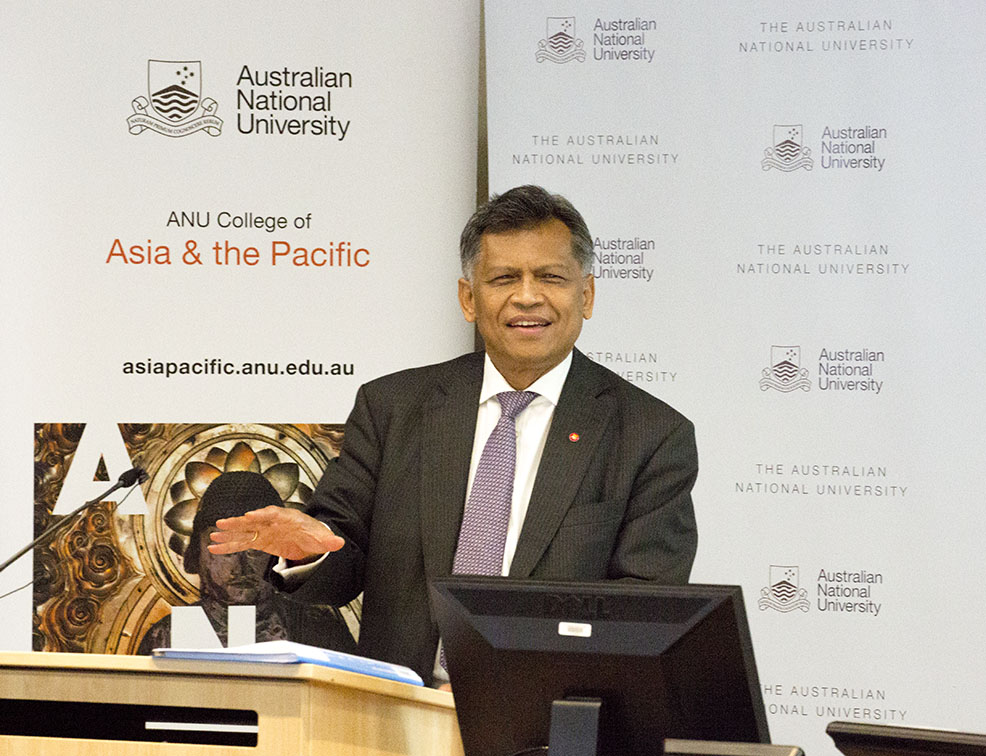
‘You [Australia] have found Southeast Asia, don’t lose it.’
These were the words of the highly charismatic ASEAN Secretary-General Dr Surin Pitsuwan, the key-note speaker at last Tuesday’s launch of the Southeast Asia Institute at the Australian National University. Discussing the future of ASEAN, a central theme of his talk is best reflected in the quote above: now that Australia has ‘found’ Southeast Asia, it is in our best interest to continue to focus our cooperation, support and involvement in that region.
According to Dr Surin, Australia’s ‘discovery’ and involvement in the region has been a recent phenomenon. For a long time, Southeast Asian states, and even Australians themselves, viewed Australia as something of an aberration—a European country that just happened to be located in the Asia Pacific. However, as Southeast Asia has grown and changed, it was ‘about time’ for Australia to look towards its neighbours and realise the advantages of being connected with that part of the world. This is particularly important as ASEAN has become increasingly interlinked as an economic bloc, and is attracting world attention as being centred in the ‘new growth centre of the world’.
However, it was not just economics that Dr Surin pointed to as being central to the relationship. Dr Surin emphasised ASEAN’s increasingly important role as a force for security and stability in the region. As the centres of global economic and strategic power shift towards East Asia, ASEAN will have a significant role as a stage on which tensions between states can be played out and resolved. However, he argued that this was contingent upon neighbouring states such as Australia continuing to engage with ASEAN. He implored Australia to keep the ASEAN perspective and framework in mind when dealing bilaterally with not only Southeast Asian states, but also the East Asian region more broadly.
What does this mean for Australia? With regards to regional stability, the example Dr Surin gave was the 1999 crisis in East Timor—a complex and sensitive issue for Australia. Indeed it was perhaps because of the complexities and sensitivity surrounding the crisis that he chose it as an example for the occasion. The crisis saw certain ASEAN states move away from their rigid positions of non-intervention to contribute to an international resolution of an issue. Under these conditions, Australia was able to engage and collaborate with Southeast Asian neighbours to lead a UN-sanctioned military intervention in the form of INTERFET. This was especially significant given Indonesia’s opposition to Australian leadership in the intervention. The use of this example was perhaps a pointed hint that Australia’s influence in the region is not always as welcome as we may wish. Despite extensive Australian involvement and leadership, Dr Surin noted that Jakarta turned to the ASEAN states to take command, while asking that Australia only be included as a (very) last resort. Dr Surin also observed that when law and order in East Timor was re-established, it was in a framework familiar to ASEAN nations—in ‘our own language’ as he put it. The implication for Australia is clear: yes, we need you but you also need us.
In many ways Dr Surin makes a valid point. The Southeast Asian response to the East Timor crisis was somewhat constrained and limited—in part due to a lack of resources and hesitation over intervention into a sovereign state’s affairs. As a result, Australia shouldered the majority of the military effort, showing that cooperation between ASEAN and partners such as Australia can be a vehicle for maintaining regional stability.
The Asia–Pacific region is a complex and dynamic place with many unresolved tensions. Any medium that can facilitate dialogue and promote cooperation should thus be welcomed. Nevertheless, there are some caveats and limitations to bear in mind. Although the Southeast Asian security architecture continues to evolve, and Australian Prime Ministers no longer characterise their counterparts in the region as ‘recalcitrant’, ASEAN still faces significant hurdles in becoming an effective force for stability within the broader East Asian region.
ASEAN itself has its own internal problems and conflicts; it’s not a ‘union’ but a group of diverse states and it doesn’t necessarily present a unified front on different issues—or even feel the need to do so. The tension between Thailand and Cambodia is one example of internal discord. Still, as the Asia–Pacific region continues to attract the attention of the world and as Australia’s interests in the region to our north continue to gain in importance, Dr Surin is right: now that we’ve found Southeast Asia, we’d do well not to lose it.
Chris Louie and Mary Willett are currently undertaking ASPI’s internship program. Image courtesy of Ty Mason, College of Asia and the Pacific, ANU.

